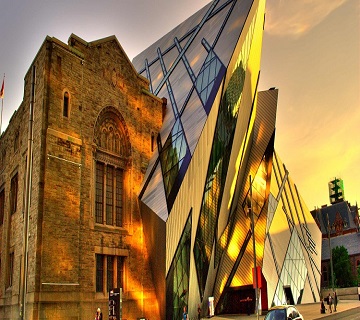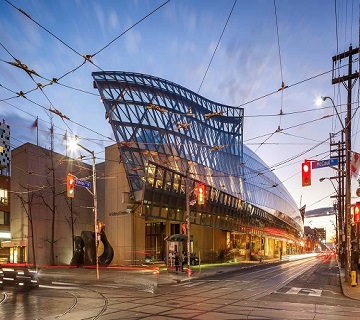Venue & Hospitality

City Highlights
About City
Toronto is the capital city of the province of Ontario in Canada. It is the largest population center in Ontario with a population over 5 million. It is situated on the north-west shore of Lake Ontario. Toronto area is the great metropolitan area in Canada. It is a dynamic county town with a core of soaring skyscrapers, and free-standing CN Tower. Toronto is a popular destination for tourists. The city’s motto is “Diversity Our Strength”. Toronto has North America’s third largest concentration of private companies. This city is a global finance, commerce as well as transportation hub and has always been ranked highly in the fields of life expectancy, personal safety, healthcare, education etc.
City Attractions:
CN Tower, Royal Ontario Museum, Art Gallery of Ontario, Niagara Fall, Ontario Science Centre, Canada’s Wonderland, Hockey Hall of Fame, Fabulous shopping in Toronto, The Scarborough Bluffs, The Distillery District, Rogers Centre, Ripley's Aquarium, Toronto Islands, Toronto Zoo, Hanlan’s Point Beach, Ontario Place Corporation, Sugar Beach, Centerville Amusement Park.
Geographical Position of the City, Toronto:
Toronto covers an area of 630 square kilometers (243 sq. mi.), with a maximum north-south distance of 21 kilometers (13 mi) and a maximum east-west distance of 43 km (27 mi). It has a 46-kilometre (29 mi) long waterfront shoreline, on the north-western shore of Lake Ontario. The city lies on largely flat land, with little in the way of hills.
Get in:
Freeways and roads:
There are a number of municipal expressways and provincial highways that serve Toronto and the Greater Toronto Area. In particular, highway 401 bisects the city from west to east, bypassing the downtown core. Other provincial highways include highway 400 which connects the city with Northern Ontario and beyond and Highway 404, an extension of the Don Valley Parkway into the northern suburbs. The Queen Elizabeth Way (QEW), North America's first divided intercity highway, terminates at Toronto's western boundary and connects Toronto to Niagara Falls and Buffalo. The main municipal expressways in Toronto include the Gardiner Expressway, the Don Valley Parkway, and to some extent, Allen Road.
Airports:
Toronto Pearson International Airport is the largest and busiest airport in Canada, the second-busiest international air passenger gateway in the Americas, and the 31st-busiest airport in the world by passenger traffic, handling 49.5 million passengers in 2018.
Billy Bishop Toronto City Airport offers limited commercial and passenger service to nearby destinations in Canada and the USA.
Toronto/Buttonville Municipal Airport in Markham provides general aviation facilities.
Hamilton's John C. Munro International Airport and Buffalo's Buffalo Niagara International Airport also serve as alternate airports for the Toronto area in addition to serving their respective cities.
Railways:
Toronto is served by inter-city Via Rail to other Canadian cities and Amtrak's daily New York City trains through Union Station, a grand neoclassical structure in the heart of the city's downtown, which is shared with GO Transit's commuter trains.
The Union Pearson Express, an airport rail link from Toronto Pearson International Airport to Union Station and the central business district.
Economic condition:
Toronto is an international center for business and finance. Generally considered the financial capital of Canada, Toronto has a high concentration of banks and brokerage firms on Bay Street, in the Financial District. The Toronto stock exchange is the world's seventh-largest stock exchange by market capitalization. The five largest financial institutions of Canada, collectively known as the Big Five, have national offices in Toronto. Toronto's unemployment rate was 6.7% as of July 2016. According to the website Numbeo, Toronto's cost of living plus rent index was second highest in Canada (of 31 cities). The local purchasing power was the sixth lowest in Canada, mid-2017. The average monthly social assistance caseload for January to October, 2014 was 92,771. The number of seniors living in poverty increased from 10.5% in 2011 to 12.1% in 2014. Toronto's 2013 child poverty rate was 28.6%, the highest among large Canadian cities of 500,000 or more residents.
Top Universities and research center:
• Pharma-Medical Science College of Canada, Toronto
• Ontario College Of Homeopathic Medicine, Toronto
• Canadian College-Homeopathic, Toronto, Ontario
• Ontario College of Traditional Chinese Medicine, Toronto
• University of Toronto - St. George Campus, Toronto
• Anderson College of Health, Business and Technology, Toronto
• Toronto School of Traditional Chinese Medicine, Toronto
Venue





